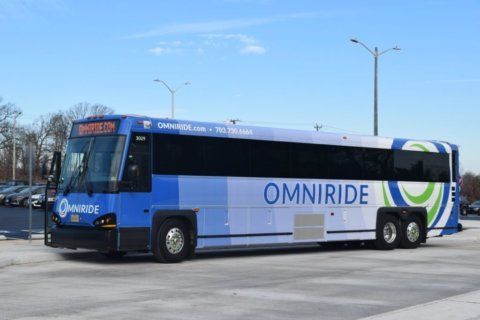This article was republished with permission from WTOP’s news partner InsideNoVa.com. Sign up for InsideNoVa.com’s free email subscription today.
This article was written by WTOP’s news partner InsideNoVa.com and republished with permission. Sign up for InsideNoVa.com’s free email subscription today.
Teacher visits to the Prince William County Schools ombudsman office were down in 2021-22 compared with the previous year, but the number of parents, guardians, and community members who brought issues to the ombudsman more than tripled.
Providing an annual report on the last school year, Monique Bookstein told the School Board earlier this month that the number of employee visitors fell from 150 to 109 between 2020-21 and 2021-22. But while just 21 parents, guardians and community members brought complaints to the office in 2020-21 – when most schools were online-only for much of the school year – 85 brought issues to the ombudsman this year.
Last year saw a surge in parent and community interest in School Board activities and reading materials. The school system’s libraries also saw an increase in book challenges last year.
According to Bookstein, most employees came with concerns related to work climate. The division’s teacher retention rate did slip slightly last school year, according to the school system, and the Prince William Education Association is months away from a vote to unionize all the division’s state-certified employees, many of whom have said that they’ve been asked to do more non-contract work than before since the pandemic.
Bookstein said that many teachers who came to her office last year were stressed about working conditions, though fewer raised any issues than the prior year.
“For employee visitors, the first systemic theme was work climate and culture. Employee visitors reported feeling stressed, anxious and wanting to leave PWCS,” Bookstein said at the Nov. 2 meeting. “These visitors described working in a toxic environment. Some employees believed raising these concerns would subject them to retaliation.”
She said the second theme among employees was communication, and breakdowns in communication between supervisors and employees that resulted in tension.
Third was concern about performance evaluations, and fourth was disparate implementation and interpretations of school system policies and regulations.
The ombudsman’s office was established in 2019 to offer conflict resolution and provide the school system with independent, anonymous feedback from employees, parents, students and community members.
The 2021-22 school year was Bookstein’s first in the position.
“An ombudsman serves as an early warning system by raising concerns which may not have surfaced without such an avenue,” Bookstein told the School Board.
The position is still relatively rare among school systems. According to Bookstein, under 1% of U.S. school districts have an ombudsman.
Parents and guardians brought issues ranging from translation services for non-English speaking families to “navigating school processes” on discipline, special education and transfers.
“Several parents and guardians reported feeling ineffective in advocating for their child because a clear explanation of these processes was not provided and/or explained by the school,” Bookstein said. “The second systemic theme was the school/parent relationship. Parent/guardian visitors expressed feeling their concerns were not adequately heard or addressed in a timely manner by administrators.”
Community members, she said, raised issues about School Board meeting participation after the board limited public comment to one hour per meeting.
School Board members said that the ombudsman’s report should be taken seriously, but that the sample size was too limited to draw any broad conclusions about how the school system was doing with regards to employee or parent concerns.
“A lot of this is perception-oriented,” Woodbridge District Member Loree Williams said. “I want to be careful about our public perception and understanding. … I want to make sure that the public understands that this data was from last year and [from] 100-something employees versus our 16,000,” she added, referring to the total number of school system employees.
Bookstein said she wasn’t surprised by how few people made use of the ombudsman’s office. Aside from concerns some employees might have about whether the office is truly confidential – which she assured it is – many people may simply not know about it.
“As a sole practitioner office, the number that utilized the service is not surprising to me, because a lot of people, for a variety of reasons, don’t necessarily come to an ombudsman’s office,” Bookstein said. “They may not know about it … others may feel that, when I do say I’m confidential, they may not feel comfortable in that.”







